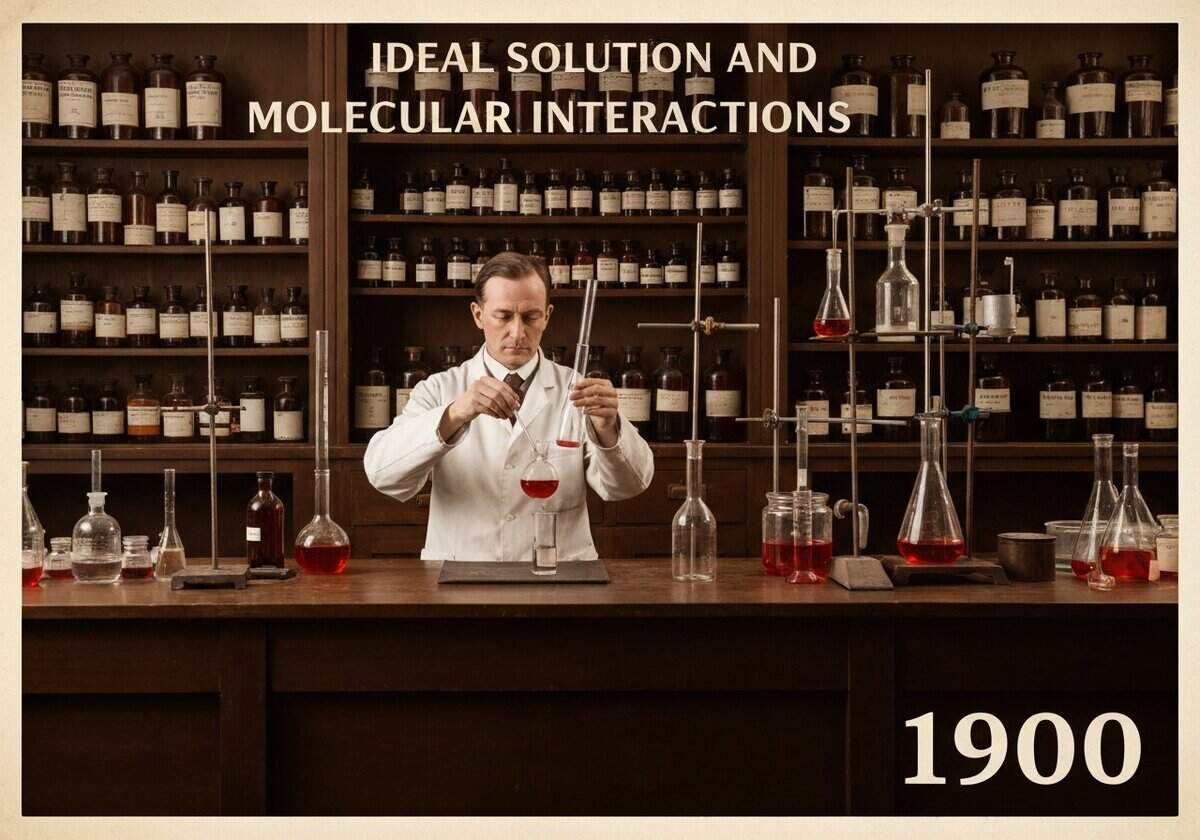An ideal solution is a theoretical model where the enthalpy of mixing is zero. This occurs when intermolecular forces between unlike molecules (A-B) are equal in strength to the average of forces between like molecules (A-A and B-B). In such solutions, volume is additive, and components obey Raoult’s law across the entire concentration range, with an activity coefficient of one.

















